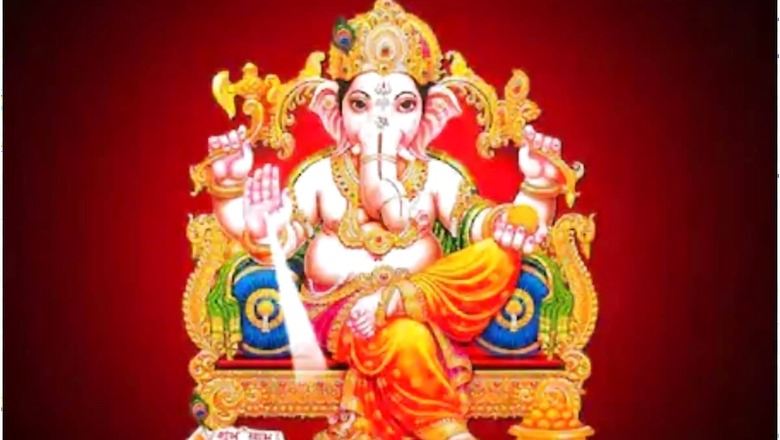
views
Sankashti Chaturthi or Sakat Chauth, also known as Sankatahara Chaturthi in south Indian states, falls on Wednesday, March 31 this year. The entire name of this ritual is Bhalachandra Sankashti Chaturthi, which is celebrated on the Chaturthi Tithi.
It is an auspicious festival which is dedicated to Lord Ganesha, who is historically worshipped first among all other Gods before commencing any Puja or ritual, according to Hindu culture.The word ‘sankashti’ has originated from Sanskrit which indicates ‘deliverance during difficult times’. Therefore, Lord Ganesha is worshipped on this day as he is considered the ‘Vighnaharta’, one who removes all obstacles, being the wisest.
Sankashti Chaturthi is observed every Lunar month. The significance of sighting the moon is immense as a result. It is said that apart from protecting devotees from all dangers, Lord Ganesha’s blessings can be sought by couples willing to bear a child.
Sankashti Chaturthi: History
Lord Shiva declared his son Ganesha as superior to all the gods, barring Vishnu, Lakshmi, Shiva and Parvati. It is said that this celebration dates back to 700 BC. Ganesha is considered as the supreme power that can avert all hurdles
Sankashti Chaturthi: Timings
This year will witness the beginning of the auspicious tithi from 2.06 pm on March 31, Wednesday. The very next day, Thursday, at 10.59 am will mark the end of Sankashti Tithi on April 1, 2021.Moonrise on Sankashti Day will occur at 9.39 pm on March 31 and moonset will happen at 9 am on April 1.
Sankashti Chaturthi: Pooja Vidhi
Sankashti puja is carried out in the evening, after seeing the moon. The ritual can be observed by maintaining strict fast, or by adhering to partial fast. People can resort to the consumption of fruits, vegetables and roots of plants. Individuals can eat peanuts, potatoes and sabudana khichdi.
And the puja can be performed with durva grass, flowers, by lighting a lamp, incense sticks; besides chanting Vedic mantra, reading out Vrat kathaout of the 13 vrats. There is one for every month with each vrat having a specific purpose and story.
The elephant-headed god of the Hindu pantheon is offered sweets or ‘naivedya’, which must include modaks, during the puja. Vedic chants include Ganesha Ashtothra, Sankashtnashana sthothra and Vakrathunda Mahakaya.
Read all the Latest News, Breaking News and Coronavirus News here. Follow us on Facebook, Twitter and Telegram.
















Comments
0 comment